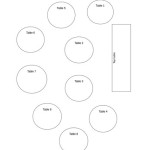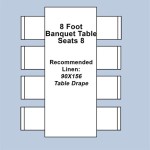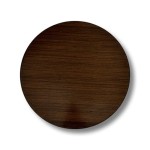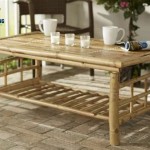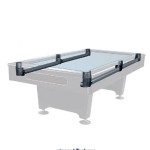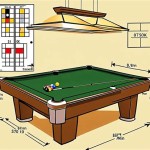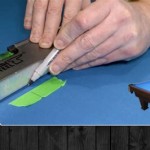Mid-Century Danish Nesting Tables: A Study in Form and Function
Mid-century Danish nesting tables are a quintessential example of Scandinavian design principles. Characterized by clean lines, functional elegance, and high-quality craftsmanship, these tables embody the era's commitment to both aesthetic appeal and practical utility. Their enduring popularity stems from their versatility, space-saving design, and ability to complement a wide range of interior styles.
Nesting tables, in general, have a history extending beyond the mid-century period. The concept of multiple tables of varying sizes that can be stored neatly within one another has roots in earlier furniture design. However, Danish designers in the mid-20th century refined the form, elevating it to an art form while retaining its inherent functionality. The focus on natural materials, particularly teak and rosewood, further defined the aesthetic of these pieces.
The Danish modern movement, of which these tables are a significant part, emphasized simplicity, functionality, and the integration of form and material. Designers sought to create furniture that was not only aesthetically pleasing but also served a practical purpose in the home. This philosophy is perfectly embodied in the design of nesting tables, which offer flexible surface space without sacrificing valuable floor area.
Key Characteristics of Mid-Century Danish Nesting Tables
Several defining features distinguish mid-century Danish nesting tables from other types of furniture and even from nesting tables produced in other regions. These characteristics contribute to their unique appeal and enduring value.
Firstly, the choice of materials is paramount. Teak and rosewood were the most commonly used woods, prized for their rich color, durability, and distinctive grain patterns. These hardwoods were often finished with a clear lacquer or oil to enhance their natural beauty and provide protection against wear and tear. Other woods, such as oak and beech, were also occasionally employed, often in lighter finishes to achieve a different aesthetic. The selection of wood was critical in establishing the overall tone and quality of the piece. Skilled woodworkers carefully considered the grain direction and figuring of the wood when constructing the tables, ensuring that each table was a unique and visually appealing object.
Secondly, the design is characterized by clean, simple lines. Ornamentation is minimal, with an emphasis on the inherent beauty of the materials and the proportions of the tables. The legs are typically tapered and often angled outwards, a design element common in mid-century modern furniture. Table edges are usually gently rounded or chamfered to prevent sharp corners and create a more comfortable feel. The absence of excessive detail allows the natural beauty of the wood to take center stage. The overall aesthetic is one of understated elegance, reflecting the Scandinavian design ethos of "less is more."
Thirdly, functionality is at the core of the design. The tables are designed to nest seamlessly within each other, maximizing space efficiency. The size difference between the tables is carefully considered to ensure that they are easy to pull out and put away. The height of each table is also carefully calibrated to ensure that they are useful as side tables, coffee tables, or occasional tables. The practicality of the design is a key factor in the enduring popularity of these tables. They offer a flexible and adaptable solution for a variety of needs, making them an ideal choice for smaller living spaces or for those who appreciate minimalist design.
Notable Designers and Manufacturers
Several prominent Danish designers and manufacturers contributed to the popularity and refinement of mid-century nesting tables. While attributing specific designs to individual designers can sometimes be challenging due to the collaborative nature of design within furniture companies, some names are consistently associated with exceptional examples of nesting tables.
Kai Kristiansen is a designer renowned for his innovative and functional furniture. While not exclusively known for nesting tables, his designs often incorporated similar principles of space-saving and modularity. His work often featured a refined elegance and a focus on ergonomic considerations.
Peter Hvidt and Orla Mølgaard-Nielsen were a design duo who created a range of furniture, including nesting tables, known for their elegant lines and attention to detail. Their designs frequently featured a combination of wood and other materials, such as leather or metal, adding a touch of sophistication to their pieces.
Andreas Tuck was a notable manufacturer known for producing high-quality furniture designed by various designers. The company's commitment to craftsmanship and attention to detail made them a respected name in the Danish furniture industry. Tables bearing the Andreas Tuck mark are highly sought after by collectors.
Beyond individual designers and manufacturers, companies such as Glostrup Møbelfabrik, France & Søn, and Søborg Møbelfabrik also produced significant numbers of mid-century Danish nesting tables. These companies often collaborated with designers to create furniture that met the demands of the market while adhering to the principles of Danish modern design.
Identifying and Assessing Mid-Century Danish Nesting Tables
For those interested in acquiring mid-century Danish nesting tables, careful assessment is essential to ensure authenticity and value. Several factors should be considered when examining a potential purchase.
Firstly, the wood type and finish are important indicators of authenticity. Teak and rosewood were the most commonly used woods, and their grain patterns and color should be consistent with these materials. The finish should be original or, if refinished, should be done in a manner that preserves the natural beauty of the wood. Evidence of poor-quality refinishing, such as excessive gloss or uneven application, can detract from the value of the piece.
Secondly, the construction and joinery should be examined carefully. Danish furniture makers were known for their meticulous craftsmanship, and the joinery should be tight and precise. Look for details such as dovetail joints or mortise-and-tenon joints, which are indicative of high-quality construction. Wobbly legs or loose joints can indicate poor construction or damage.
Thirdly, the presence of maker's marks or labels can help to identify the designer or manufacturer of the tables. While the absence of a mark does not necessarily indicate that the tables are not authentic, the presence of a recognizable mark can add to their value and provenance. Common marks include those of Andreas Tuck, France & Søn, and other reputable Danish furniture makers. A quick internet search for the maker's mark can often provide additional information about the manufacturer and the specific design.
Finally, the overall condition of the tables should be assessed. While some wear and tear is to be expected in vintage furniture, significant damage, such as cracks, chips, or water stains, can detract from the value of the piece. Minor scratches and blemishes can often be easily repaired, but more extensive damage may require professional restoration. It is also important to check for replaced parts, which can affect the authenticity and value of the tables. Careful inspection and a discerning eye are crucial for identifying genuine and well-preserved mid-century Danish nesting tables.

Rare Danish Bramin Nesting Table 50s 60s Teak Coffee Mid Century Vintage Side Sidetable

Refinished Mid Century Modern Danish Teak Nesting Tables At 1stdibs

Mid Century Danish Design Teak Nesting Tables 1960s Sold Old North Interiors

Mid Century Modern Vintage Danish Nesting Tables Retro

Mid Century Danish Teak Nesting Tables 1960 Set Of 3 For At Pamono

Danish Mid Century Modern Nesting Tables In Teak Chairish

Set Of 3 Nesting Tables With Tapering Round Legs Teak

Mid Century Danish Rosewood Nesting Table Set 1960s Of 3 For At Pamono

1880 Danish Modern Mid Century Vintage Teak Oak Nesting Tables Atomic Threshold

Vintage 1950s Danish Teak Nesting Tables By Erling Torvits For Heltborg Møbler Mid Century Scandinavian Design

